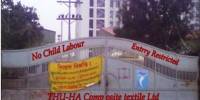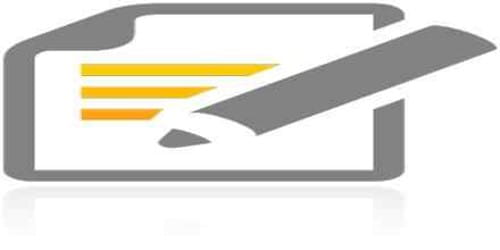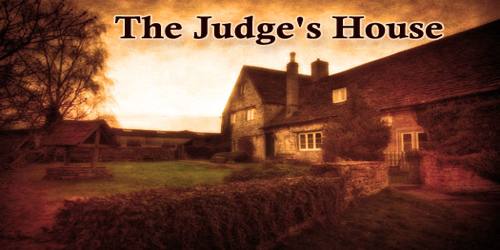Introduction of Merchandising Department:
A merchandising division surrounds the concept of the target customer and translates customer preferences into a product line for the rest of the apparel firm. Merchandising is the planning, development and presentation of product line for identified target market with regard to prices, assortment, styling and timing.
Function of Merchandiser:
The merchandising process interacts with and may be limited by the business plan and the marketing plan. The primary components of merchandising activities included following—
1. Line planning is the formulation of the parameters that guide line development and presentation and influences sourcing and production process
2. Line development has subcategories of the concept, creative design, line adoption, and technical design. Line development included the actual merchandise that will fill out the line plane through some combination of product development and selecting goods at wholesale.
3.Line presentation with subcategories of internal, wholesale, and retail Line presentation involves process required to evaluate the line and make the line visible salable. .Line presentation results in evaluation and sale of the product offering.
Marketing Section:
A marketing division is responsible for “shaping and strengthening the image of a company and it products through promotion, optimizing sales opportunities and developing alternate strategies for corporate growth.
Responsibilities of marketers:
Conduct and report customer research.
Position the firm relative to target markets.
Position the firm relative to the competition.
Develop the firm’s image.
Propose marketing programs
Propose advertising /promotion strategies.
Forecast sales.
Procurement section
The basic function of Procurement is as follows:
Right product or materials
Right time
Right quantities
Right price
Right quality
Right delivery.
Sample Section:
Basic patterns or blocks are developed to reflect the firm sizing standard and fit. A basic block pattern is a set of pattern pieces for the simplest garments of the particular type that reflects a set of measurement in the sample size. The terms basic blocks sloper, and master pattern may be used interchangeably. Firms have basic blocks for each type of product in their product line — skirts, pants, shirts, jackets, etc
Style blocks are variations of the individual pieces of the basic block that have been modified to include styling case. Style blocks contain both comfort and styling case.
Draping involves developing a pattern by manipulating fabric directly on a body form. To reduce costs, some firms prefer to have their designers work with Muslin first before fashion fabric are draped since the pattern may be draped several times before it is finalized
Production Department:
Cutting section
sewing section
Finishing Section
Maintenance Section
Cutting section Sewing section
Finishing Section
Organgram of production:
Production department:
Production-along with marketing, merchandising, operation, finance is one of the
Essential functions in apparel manufacturing. Apparel production involves the conversion of materials (INPUT) into completed, salable garments (output) flat pieces of goods are cut, shaped, assemble, and trimmed as they converted into specific styles to meet customer needs. Production process may be carried out in a firm’s own plant and sourced from other firms located in any place. Production plants specialize in a certain types of materials and finished goods because of the limitation of equipment, skills and expertise available.
CUTTING SECTION:
Cutting is the production process of spreading (Sectioning, carving, serving ) a spread into garment parts that are the precise size and shape of the pattern pieces on a marker. The cutting process may also involved transferring marks and notches from the marker to garments parts to assist operator in sewing. Chopping or sectioning a spread blocks of pieces goods may precede precision cutting of individual pattern shapes. This is often done to allow for accurate machine of fabrics design or easier manipulation of a cutting knife.
Fabrics pieces may be cut to predetermined length for matching patterns or for additional processing such as screen printing. Spreads of plaid fabrics may be pre sectioned into block so the design on the fabrics can be perfectly matched before cutting to the shape of the pattern pieces. Per sectioned pieces may be also be also garment parts knitted to specific finished lengths such as sweater bodies. Per sectioned pieces such as leather or other specialty fabrics may be spread and cut as a single ply or laid up and cut as a multiple – ply spread.
The cutting process may also involve in sewing.
Function of cutting in charge:
The most important functions of cutting in charge:
Examine incoming orders and width and availability of pieces goods
Determine volumes size ratios, sectioning procedure for making marker
Determine whether the file maker are available or new ones are needed
Determination specification for optimum marking and fabrics utilization
Determining most effective use of spreading and cutting equipments
Issuing orders for making spreading and cutting
Function of pattern and marker:
All the patterns in each size of a style are verified that is cheeked very carefully before sending them to cut order planning. Pattern verification includes checking the followings—
Correctness of grade incremental
Competitively of reading with styles specifications
Length and alignment of adjoining seam allowances
Notch placement and alignment with adjoining pattern pieces
Placement of internal markings \Placement of grain marking.
Sewing section:
Sewing section can be divided into following sub-section on the basis of their functions:
Function of production managers:
Production managers are responsible for managing in a firm’s styles through conversion process. Managing production in owned facilities involves people, process, equipment and facilities. Managing production through vendors involves evaluation of production facilities, negotiation of price quotas and delivery and monitoring quality
Production managers are the head of production department. He is who takes all the decision in the development of the desired requirement of the buyers. He takes all the decision in the decision making table. His main job may be divided into planning and coordinating function.
Planning:
Production standards are used in production planning to do the following:
Estimate the rate or production for completion of each operation
Determine the required capacity for an order or style
Determine production start dates and completion dates for orders
Plane the daily volume that should be completed
Determine the back inventory needed to support the work flow
Determine how many operators and machine should be performing each operation
Function of floor chief:
The function of floor the floor chiefs are to control the floors attain the maximum output from the floor. He coordinates among the worker in the floor. He is accountable to the production manager. He follows the instruction received from the product manager.
His main function is as follows:
Floor layout
Setting line layout
Manpower setting in a line
Allocation of manpower
Setting machine and accessories
Setting over time
Allocation of the line for particular style to increase productivity
Helping or supporting the line chief
Coordinative functions with other departments like cutting, finishing, quality and sub store as well as sample section
Allocation of line chief and supervisor in a particular time
Function of line chief:
Line chief is accountable to the floor chief. He coordinates with the supervisor and operates as well. The following are the functions of line chief.
Target achievement
Quality assurance
Proper utilizations of worker
Line layout and assembly of the machine in a particular line as per line layout diagram
Allocates operators for particular job
Sequential of production process in the assembly line
Machine layout
Allocation of folders and accessories
Coordination among the supervisors and floor chief.
In case of problem, which can not be solved by the supervisors
Preparation of the over time in case of needed
Solving bottleneck
CUTTING SECTION:
Cutting is the production process of spreading (Sectioning, carving, serving ) a spread into garment parts that are the precise size and shape of the pattern pieces on a marker. The cutting process may also involved transferring marks and notches from the marker to garments parts to assist operator in sewing. Chopping or sectioning a spread blocks of pieces goods may precede precision cutting of individual pattern shapes. This is often done to allow for accurate machine of fabrics design or easier manipulation of a cutting knife.
Fabrics pieces may be cut to predetermined length for matching patterns or for additional processing such as screen printing. Spreads of plaid fabrics may be pre sectioned into block so the design on the fabrics can be perfectly matched before cutting to the shape of the pattern pieces. Per sectioned pieces may be also be also garment parts knitted to specific finished lengths such as sweater bodies. Per sectioned pieces such as leather or other specialty fabrics may be spread and cut as a single ply or laid up and cut as a multiple – ply spread.
The cutting process may also involve in sewing.
Function of cutting in charge:
The most important functions of cutting in charge:
Examine incoming orders and width and availability of pieces goods
Determine volumes size ratios, sectioning procedure for making marker
Determine whether the file maker are available or new ones are needed
Determination specification for optimum marking and fabrics utilization
Determining most effective use of spreading and cutting equipments
Issuing orders for making spreading and cutting
Function of pattern and marker:
All the patterns in each size of a style are verified that is cheeked very carefully before sending them to cut order planning. Pattern verification includes checking the followings—
Correctness of grade incremental
Competitively of reading with styles specifications
Length and alignment of adjoining seam allowances
Notch placement and alignment with adjoining pattern pieces
Placement of internal markings \Placement of grain marking.
Sewing section:
Sewing section can be divided into following sub-section on the basis of their functions:
Function of production managers:
Production managers are responsible for managing in a firm’s styles through conversion process. Managing production in owned facilities involves people, process, equipment and facilities. Managing production through vendors involves evaluation of production facilities, negotiation of price quotas and delivery and monitoring quality
Production managers are the head of production department. He is who takes all the decision in the development of the desired requirement of the buyers. He takes all the decision in the decision making table. His main job may be divided into planning and coordinating function.
Planning:
Production standards are used in production planning to do the following:
Estimate the rate or production for completion of each operation
Determine the required capacity for an order or style
Determine production start dates and completion dates for orders
Plane the daily volume that should be completed
Determine the back inventory needed to support the work flow
Determine how many operators and machine should be performing each operation
Function of floor chief:
The function of floor the floor chiefs are to control the floors attain the maximum output from the floor. He coordinates among the worker in the floor. He is accountable to the production manager. He follows the instruction received from the product manager.
His main function is as follows:
Floor layout
Setting line layout
Manpower setting in a line
Allocation of manpower
Setting machine and accessories
Setting over time
Allocation of the line for particular style to increase productivity
Helping or supporting the line chief
Coordinative functions with other departments like cutting, finishing, quality and sub store as well as sample section
Allocation of line chief and supervisor in a particular time
Function of line chief:
Line chief is accountable to the floor chief. He coordinates with the supervisor and operates as well. The following are the functions of line chief.
Target achievement
Quality assurance
Proper utilizations of worker
Line layout and assembly of the machine in a particular line as per line layout diagram
Allocates operators for particular job
Sequential of production process in the assembly line
Machine layout
Allocation of folders and accessories
Coordination among the supervisors and floor chief.
In case of problem, which can not be solved by the supervisors
Preparation of the over time in case of needed
Solving bottleneck
Function of Supervisor:
Supervisor is called the first line the executive in the floor. Their functions as follows:
Supervisor operates and helpers in all the operation
Constant monitoring the of materials and the accessories
Ensure quality output
Ensure productivity
Solving operational problems in case of productivity
Solving bottleneck
Training operator to achieve desired output
Development of skilled operator
He is a motivator
Supervising operators and helpers in a line
Allocation of job to operators and helpers
Development of helper to operator
Function of operator:
Operator is the one who occupies the maximum number in the assembly .They are the one who really sweat for the productivity in an organization. Their outcome is the outcome of the company. They are the one who contribute more in the garments sectors the operator is the most important person in the factory.
The function pf operator is as follows:
Assembling parts
Proper handling of machine and parts
Ensures quality
Ensures capacity target
Ensures measurement of garments as per instruction
Ensures allowances as requirements and instruction
Ensures productivity
Reduce wastage, alter and rejections
Informing supervisors in case of handicap in regards to operations and machine as well
Ensures utilization of numbers to reduce quality rejects
ORGANOGRAM OF FINISHING SECTION
Finishing section:
Finishing section help in the development of exports before shipment. The whole proceeding before shipment has been made in this department
Function of the finishing section:
The functions of the finishing section are as follows:
Process control
Pressing
Folding
Hang tag and others attachments
Poly bag
Assortment
packing
Pre shipment audits
Shipment
Organogram of Maintenance section
Maintenance section:
Maintenance department work in the development of the process through or by the help of machines. Their job is to ensure fault free machines at good conditions. Ensures delivery of right machines at the right place.
The functions of maintenance department work in the development are as follows:
Supply of equipment for assembly and pressing
Discuss issues related to equipment selection
Explain mechanization and automation relative to general and special purpose machines
Examine the basic components of sewing machines work aids and finishing equipment
Examine the effect equipment on product quality and performance
Procurement of those machines required for the production process
Preventive maintenance
Training of man in the section for specialized machines
Break down maintenance
Supply of accessories like folder or attachments
Function of maintenance in charge:
Understanding layout and preparation of layout
Understanding the requirement of machine
Changing a machine from heavy to light and vise versa
Understanding the requirement of folder and preparation of folder
Setting m/c as per layout and should adjust the m/c according to the fabrics used
The accessories should adjusted in the m/c where it will be needed for quality productivity
Attending pre- production meeting
Making a meeting daily with his subordinated for batter time utility and output as well
Understanding floor layout and utilization of space
Responsible for the development of proper lighting at the factory
Responsible for proper flow of efficiency
Responsible for all kinds of maintenance
Attending to the operator at all time to solve the mechanical problem at the line to avoid to any kind of hindrance or flow of productivity
Keeping better understanding of quality and to assess quality management
He must understand fabric and the nature of fabric
Keeping good liaisons with the production, cutting, quality department
Responsible for preventive maintenance and break down maintenance
Regular servicing of m/c before placement another styles
Responsible for proper maintenance of accessories and spare part
Proper recording of all the materials
Ensures flow of electricity at the required place
Function of mechanics:
Attending floor
Fixing machine at the lines
Adjustment of the machine
Ensuring proper adjustment of the m/c to insure quality and productivity
Adjusting or fixing accessories in the m/c like folder or spares or change of needles if needed
Helping in the layout and line setting
Setting m/c as per line layout
Understanding the needed of machines in a process and adjust the m/c accordingly like light to heavy to light
Servicing of m/c
Preventive maintenance
Breakdown maintenance
Commercial Department:
Packing is a critical element in a getting the product to the distribution center or customer in good condition. The type of containers used and how the goods are packing in those containers affect the condition of the merchandise and the efficiency of the shipping process.
Utilization of container space can impact shipping cost for international shipping. A firm pays to ship a full container and if it is not full the cost in the same
Export and import section :
Major function of Export and import section :
Making all the procedures for the clearance of the good from point of origin to the sea port to a manufacture
The arrangement of shipment from the point of production to the point of sale
Involved in the development of negotiation in most of the cases
Responsible for the customer formalities
Arranging procedural matters in the development of back to back L/C based on master L/C.
Responsible for receiving the materials both local and foreign
Insurance is one of the functions
Damage claims
Banking Section
Major function of Banking Section:
Issuance of quota
Involved in the development of arranging all the formularies like BGMEA EPB and shipment
Recommending for correct utilization of fabrics/yarn/ acrylic/wool
Giving permission for inner bond sub-contract of bonded warehouses goods
Issuing utilization declaration (U/D), export orders for clearance of raw materials factories.
Helping disposal of stock lost of fabr
Human Resource &Administrative Department
Information system selection
Recruitment & career development and training section
compliance section
Inventory management section
Human Resource &Administrative Department:
People are a firm’s greatest resource. Employees and their degree of motivation have more to do with the success of a firms then any other single factor. Motivation may be compensation for completed work recognition by peers or management, a feeling of accomplishment a desire to learn. Trainer and managers need to be aware of motivational factors in developing training programs and compensation systems. Motivation is very closely aligned with job satisfaction.
The basic function of Human Resource:
Recruitment and placement
Designing salary and wages
Development of employees through training
Counseling
Motivation employees for the achievement of the organization goal
Development of “sense of belonging”
Bringing organization goal and the individual goal in the same wave line
Creation of better environment
Designing training need and the development of the personal to increase productivity
Ensuring payments both monthly and over time on a specific time and date
Retrenchment of employees
Administrative action in case of defalcation
Declaration of incentive
Upgrading employees
Information system section
Function of Information Technology:
Save time and money
It saves energy and reduce wastage in all spheres of life
It brings more productivity outlook
Increase efficiency
Move to the department of professionalism
Help in the development of prompt decision process
visualization of the processes predictable
Education of theft and wastage of man and material ensures
Inventory Management section:
Inventory is defined as money the system invests in things that it intends to sell. Units of inventory have value based on the total investment in the item that may be well above the original cost. Value is added to materials throughout the production process and the value remains in the system until the style of sold
Market value of items may decrease with prolonged storage. Fashion goods tend to become obsolete rather quickly.
Three cost factors must be considered in evaluating inventory:
The original cost of the goods
the cost of maintaining the inventory including interest on borrowed money and restricted cash flow
The value added to the original materials
Conclusion:
Inventory management has become a more sophisticated field because of computerization of inventory data, production planning, and real time production control, And costing systems. It is common for investment in inventory.
The major function of inventory management
Right procurement and storing
Making inventory to coincides as per order
Ensures proper storage functioning to avoid pilferage and damage of the products
procurement of the product at the right time and the right quantities in many cases
proper issues of the material at the floor
Proper recording systems
Proper placement
















